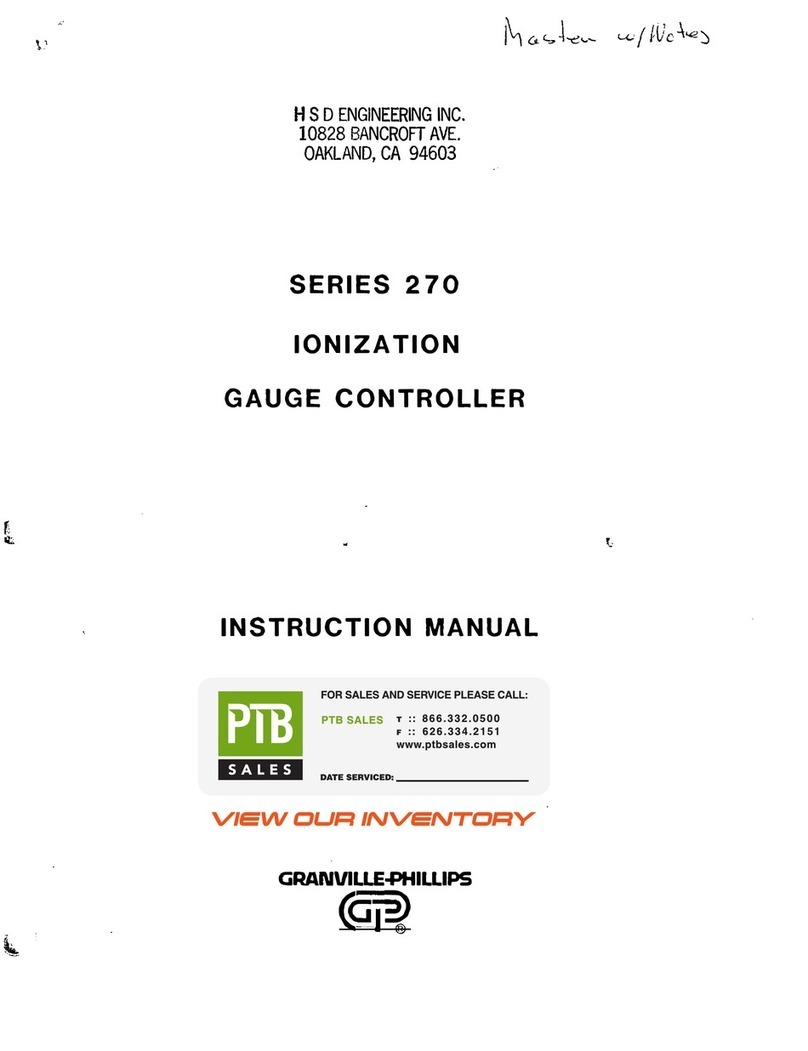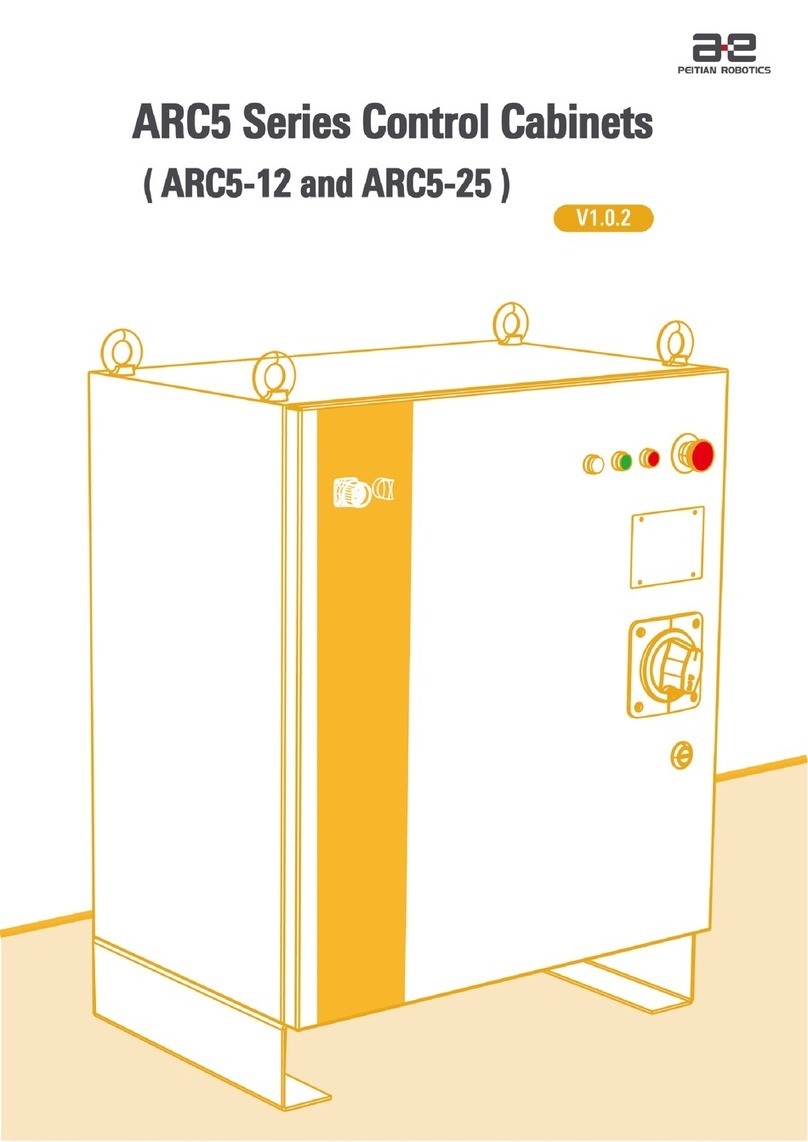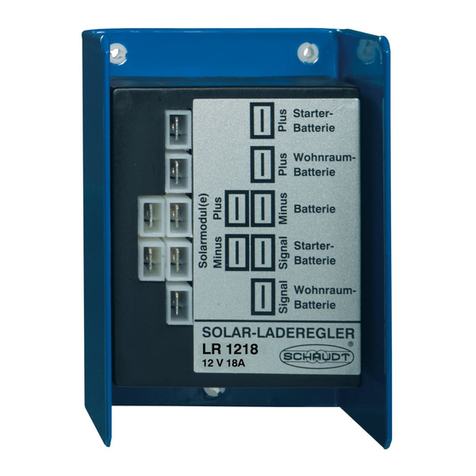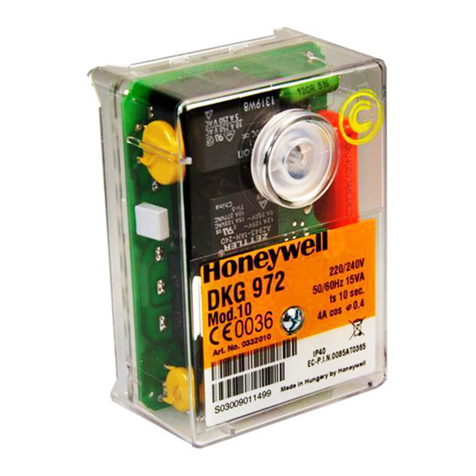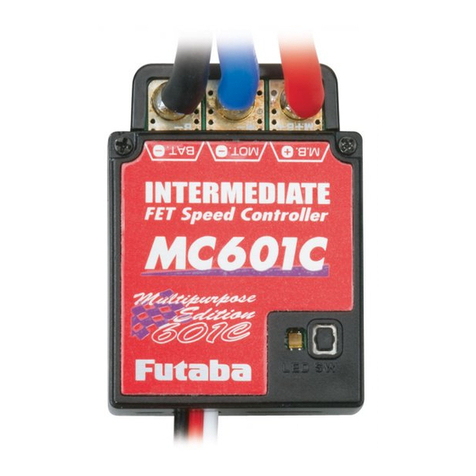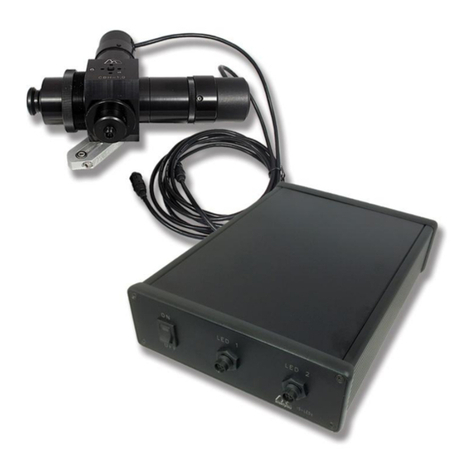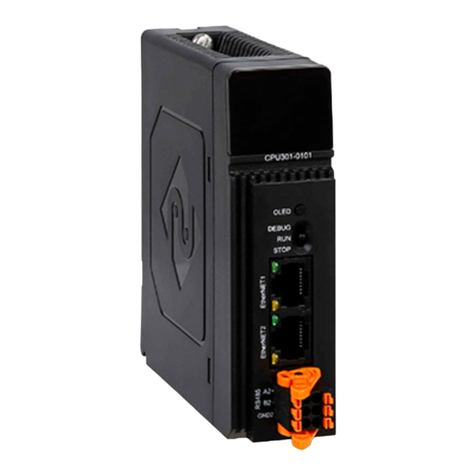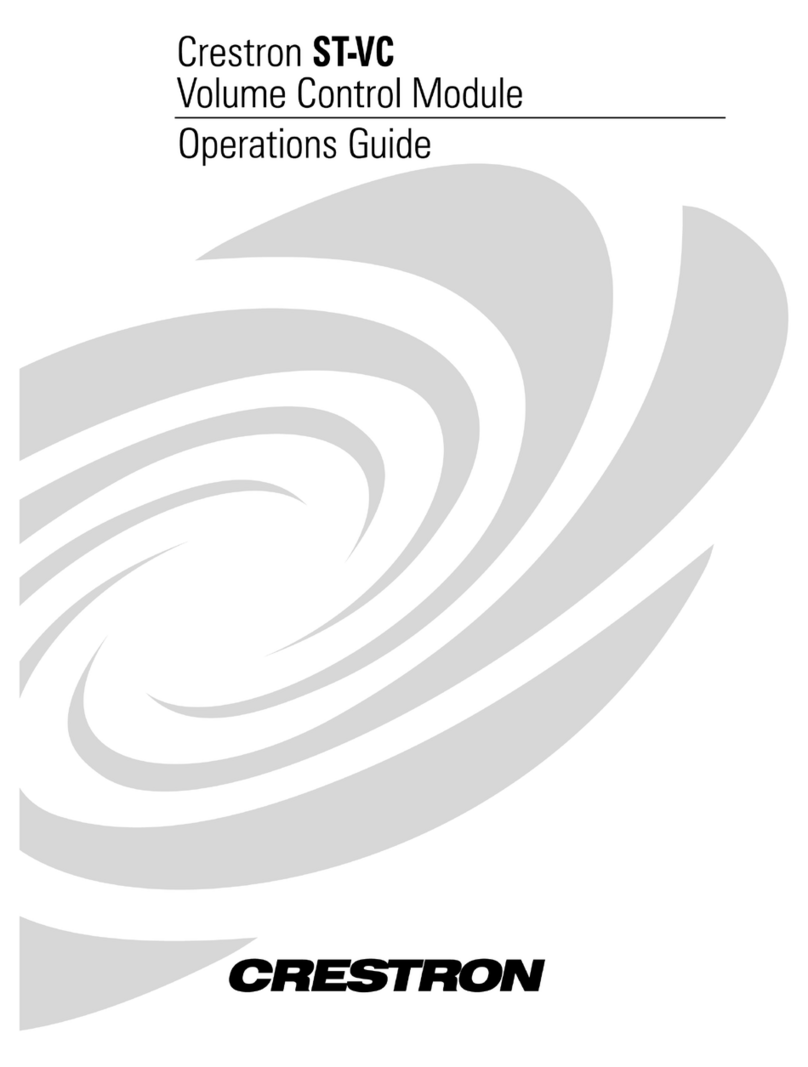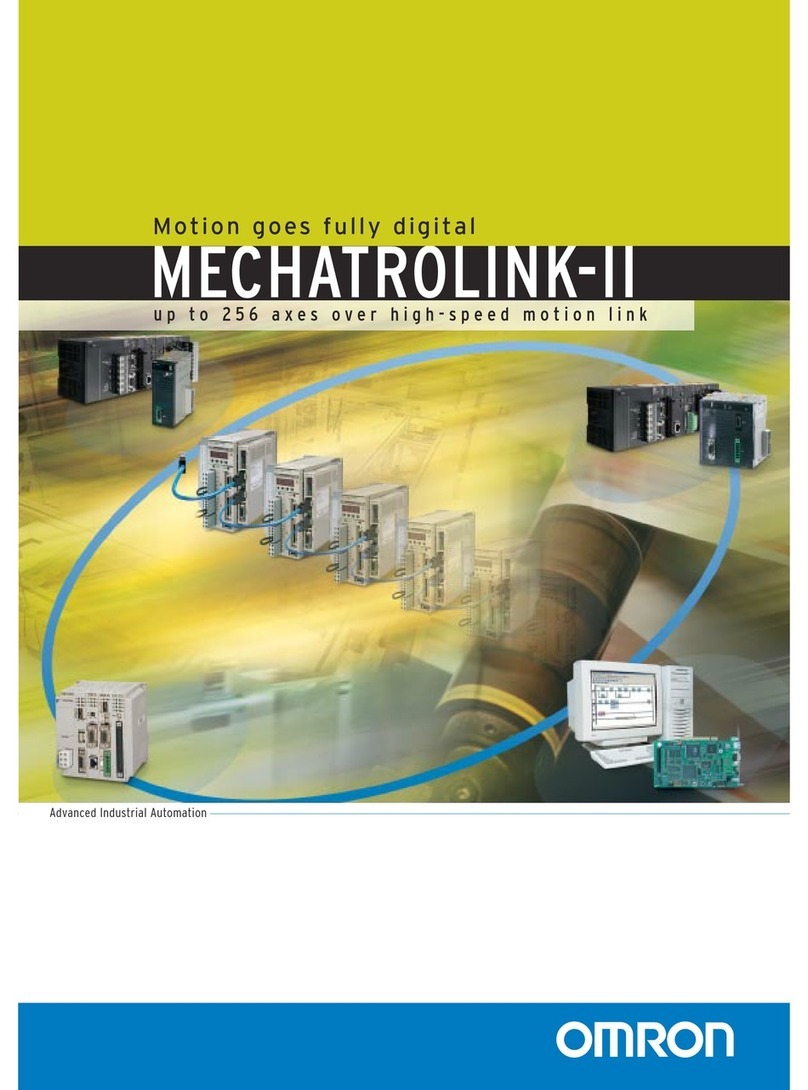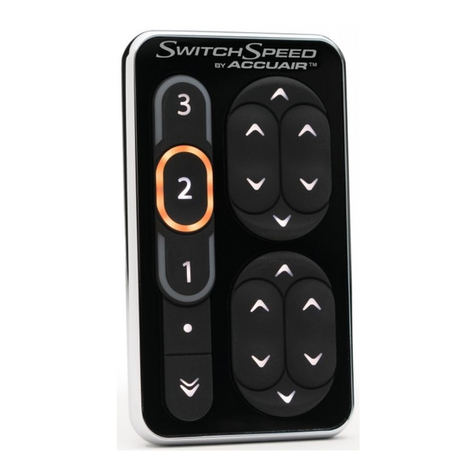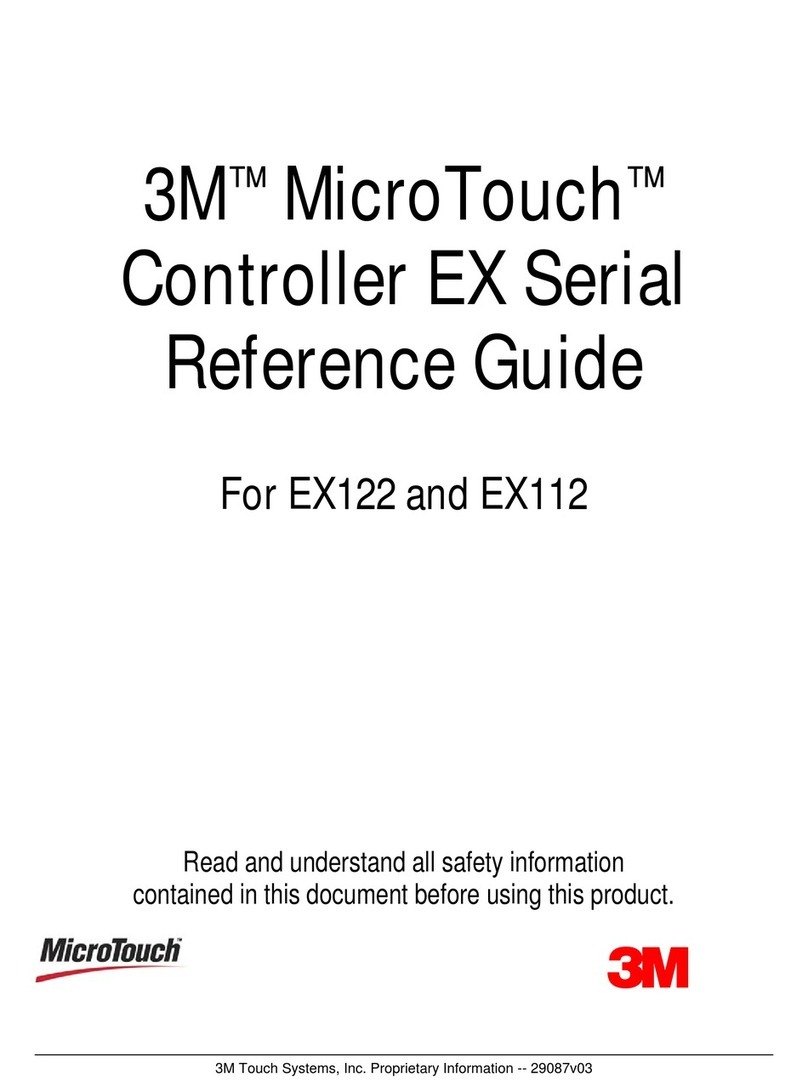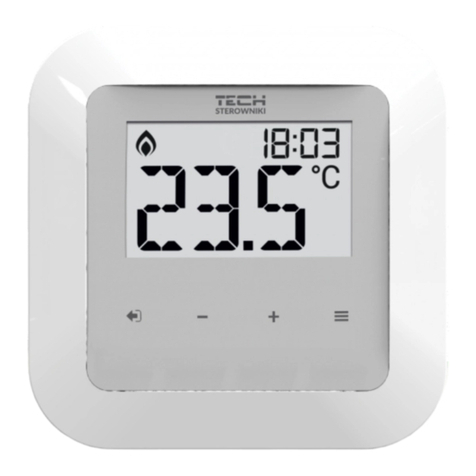Granville-Phillips Series 330 User manual

Series 330
Instruction Manual
Granville-Phillips®Series 330
Vacuum Gauge Controller
Instruction manual part number 330004
Revision 02 - August 2008


Customer Service/Support
For customer service, 24 hours per day, 7 days per week,
every day of the year including holidays, toll-free within USA,
phone 1-800-367-4887
For customer service within USA, 8 AM to 5 PM weekdays
excluding holidays:
• Toll-free, phone: 1-800-776-6543
• Phone: 1-303-652-4400
• FAX: 1-303-652-2844
•Email: [email protected]
• World Wide Web: www.brooks.com
© 2008 Brooks Automation, Inc. All rights reserved.
Granville-Phillips®and Convectron®are registered trademarks of Brooks Automation, Inc.
All other trademarks and registered trademarks are the properties of their respective owners.
Instruction Manual
Series 330
This Instruction Manual is for use with all Granville-Phillips
Series 330 Vacuum Measurement Controllers. A list of
applicable catalog numbers is provided on the following page.
Granville-Phillips Series 330
Vacuum Measurement Controller

Granville-Phillips®Series 330 Vacuum Gauge Controller
Catalog numbers for Series 330 Controllers
Controller for one Ionization gauge, with one-line display,
resistive degas, and remote input/output interface
Half-rack mount: 330501 - # #
Left mount for 19-inch rack: 330502 - # #
Center mount for 19-inch rack: 330503 - # #
Bench-top mount: 330504 - # #
Half-rack mount, 2 process control relays: 330505 - # #
Dual side-by-side controllers with two Convectron Gauge 330026 - # #
and two thermocouple gauge analog outputs:
Dual side-by-side controllers (one 330 and one 316) (20)330032 - # #
with two Convectron Gauge analog outputs:
Display options (Measurement units - for the Ion Gauge ONLY):
Torr T
mbar M
Pascal P
Powercord options:
North America 115 V 1
North America 240 V 2
Universal Europe 220 V 3
United Kingdom 240 V 4

5
Series 330 Vacuum Gauge Controller
Instruction Manual - 330004 - Rev. 02
Chapter 1 Safety Instructions . . . . . . . . . . . . . . . . . . . . . . . . . . . . . . . . . . . . . . . . . . . . . . . . . . . . . . . . . . . . . . . . . . . 9
1.1 Safety Introduction . . . . . . . . . . . . . . . . . . . . . . . . . . . . . . . . . . . . . . . . . . . . . . . . . . . . . . . . . . . . . . . . . . . 9
1.2 Equipment Grounding . . . . . . . . . . . . . . . . . . . . . . . . . . . . . . . . . . . . . . . . . . . . . . . . . . . . . . . . . . . . . . . 11
1.3 Implosion / Explosion . . . . . . . . . . . . . . . . . . . . . . . . . . . . . . . . . . . . . . . . . . . . . . . . . . . . . . . . . . . . . . . . 11
1.4 Damage Requiring Service . . . . . . . . . . . . . . . . . . . . . . . . . . . . . . . . . . . . . . . . . . . . . . . . . . . . . . . . . . . . . 13
1.5 Service Guidelines . . . . . . . . . . . . . . . . . . . . . . . . . . . . . . . . . . . . . . . . . . . . . . . . . . . . . . . . . . . . . . . . . . . 13
1.6 Warranty Information . . . . . . . . . . . . . . . . . . . . . . . . . . . . . . . . . . . . . . . . . . . . . . . . . . . . . . . . . . . . . . . . 14
1.7 FCC Verification . . . . . . . . . . . . . . . . . . . . . . . . . . . . . . . . . . . . . . . . . . . . . . . . . . . . . . . . . . . . . . . . . . . . 14
1.8 Canadian Users . . . . . . . . . . . . . . . . . . . . . . . . . . . . . . . . . . . . . . . . . . . . . . . . . . . . . . . . . . . . . . . . . . . . . 14
Chapter 2 Installation . . . . . . . . . . . . . . . . . . . . . . . . . . . . . . . . . . . . . . . . . . . . . . . . . . . . . . . . . . . . . . . . . . . . . . . 15
2.1 Receiving Inspection . . . . . . . . . . . . . . . . . . . . . . . . . . . . . . . . . . . . . . . . . . . . . . . . . . . . . . . . . . . . . . . . . 15
2.1.1 Damaged Material . . . . . . . . . . . . . . . . . . . . . . . . . . . . . . . . . . . . . . . . . . . . . . . . . . . . . . . . . . . . . 15
2.2 The Series 330 Vacuum Gauge Controller . . . . . . . . . . . . . . . . . . . . . . . . . . . . . . . . . . . . . . . . . . . . . . . . 15
2.2.1 Degas Function . . . . . . . . . . . . . . . . . . . . . . . . . . . . . . . . . . . . . . . . . . . . . . . . . . . . . . . . . . . . . . . 15
2.2.2 Remote Input/Outputs. . . . . . . . . . . . . . . . . . . . . . . . . . . . . . . . . . . . . . . . . . . . . . . . . . . . . . . . . . 15
2.2.3 Analog Output Signals . . . . . . . . . . . . . . . . . . . . . . . . . . . . . . . . . . . . . . . . . . . . . . . . . . . . . . . . . . 15
2.3 Available Options . . . . . . . . . . . . . . . . . . . . . . . . . . . . . . . . . . . . . . . . . . . . . . . . . . . . . . . . . . . . . . . . . . . 16
2.3.1 Mounting Options . . . . . . . . . . . . . . . . . . . . . . . . . . . . . . . . . . . . . . . . . . . . . . . . . . . . . . . . . . . . . 16
2.3.2 Ion Gauge Electrometer Module . . . . . . . . . . . . . . . . . . . . . . . . . . . . . . . . . . . . . . . . . . . . . . . . . . 16
2.3.3 Convectron Gauge Module (330026 or 330032) . . . . . . . . . . . . . . . . . . . . . . . . . . . . . . . . . . . . . . 16
2.3.4 Thermocouple Gauge (TC) Module (330026) . . . . . . . . . . . . . . . . . . . . . . . . . . . . . . . . . . . . . . . . 16
2.3.5 Process Control Module (330505) . . . . . . . . . . . . . . . . . . . . . . . . . . . . . . . . . . . . . . . . . . . . . . . . . 16
2.3.6 Ion Gauge Cables . . . . . . . . . . . . . . . . . . . . . . . . . . . . . . . . . . . . . . . . . . . . . . . . . . . . . . . . . . . . . . 16
2.4 Initial VGC Setup and Installation . . . . . . . . . . . . . . . . . . . . . . . . . . . . . . . . . . . . . . . . . . . . . . . . . . . . . . 17
2.4.1 Line Voltage Selection . . . . . . . . . . . . . . . . . . . . . . . . . . . . . . . . . . . . . . . . . . . . . . . . . . . . . . . . . . 17
2.4.2 Mounting Configurations. . . . . . . . . . . . . . . . . . . . . . . . . . . . . . . . . . . . . . . . . . . . . . . . . . . . . . . . 17
2.5 Ionization Gauge Types and Installation . . . . . . . . . . . . . . . . . . . . . . . . . . . . . . . . . . . . . . . . . . . . . . . . . . 19
2.5.1 Ion Gauge Cables . . . . . . . . . . . . . . . . . . . . . . . . . . . . . . . . . . . . . . . . . . . . . . . . . . . . . . . . . . . . . . 20
2.6 System Grounding Procedure . . . . . . . . . . . . . . . . . . . . . . . . . . . . . . . . . . . . . . . . . . . . . . . . . . . . . . . . . . 22
2.6.1 System Ground Test Procedure . . . . . . . . . . . . . . . . . . . . . . . . . . . . . . . . . . . . . . . . . . . . . . . . . . . 24
Chapter 3 Operation . . . . . . . . . . . . . . . . . . . . . . . . . . . . . . . . . . . . . . . . . . . . . . . . . . . . . . . . . . . . . . . . . . . . . . . . 25
3.1 330 VGC Controls and Indicators . . . . . . . . . . . . . . . . . . . . . . . . . . . . . . . . . . . . . . . . . . . . . . . . . . . . . . . 25
3.1.1 Electrometer Module Units of Measure . . . . . . . . . . . . . . . . . . . . . . . . . . . . . . . . . . . . . . . . . . . . . 26
3.1.2 Power ON/OFF . . . . . . . . . . . . . . . . . . . . . . . . . . . . . . . . . . . . . . . . . . . . . . . . . . . . . . . . . . . . . . . 27
3.1.3 Ion Gauge ON/OFF . . . . . . . . . . . . . . . . . . . . . . . . . . . . . . . . . . . . . . . . . . . . . . . . . . . . . . . . . . . 27
3.1.4 Degas ON/OFF . . . . . . . . . . . . . . . . . . . . . . . . . . . . . . . . . . . . . . . . . . . . . . . . . . . . . . . . . . . . . . . 27
3.1.5 Remote Input/Output . . . . . . . . . . . . . . . . . . . . . . . . . . . . . . . . . . . . . . . . . . . . . . . . . . . . . . . . . . 27
3.2 Theory of Operation . . . . . . . . . . . . . . . . . . . . . . . . . . . . . . . . . . . . . . . . . . . . . . . . . . . . . . . . . . . . . . . . . 28
3.2.1 Ionization Gauge Theory of Operation. . . . . . . . . . . . . . . . . . . . . . . . . . . . . . . . . . . . . . . . . . . . . . 28
3.2.2 Convectron Gauge Theory of Operation . . . . . . . . . . . . . . . . . . . . . . . . . . . . . . . . . . . . . . . . . . . . 29
3.2.3 Thermocouple Gauge Theory of Operation . . . . . . . . . . . . . . . . . . . . . . . . . . . . . . . . . . . . . . . . . . 29
3.2.4 Microcontrollers and Bus Structure . . . . . . . . . . . . . . . . . . . . . . . . . . . . . . . . . . . . . . . . . . . . . . . . 29
Table of Contents

6
Series 330 Vacuum Gauge Controller
Instruction Manual - 330004 - Rev. 02
3.3 Specifications . . . . . . . . . . . . . . . . . . . . . . . . . . . . . . . . . . . . . . . . . . . . . . . . . . . . . . . . . . . . . . . . . . . . . . . 30
3.3.1 330 VGC Specifications . . . . . . . . . . . . . . . . . . . . . . . . . . . . . . . . . . . . . . . . . . . . . . . . . . . . . . . . 30
3.3.2 Electrometer/Ion Gauge Pressure Range Specifications. . . . . . . . . . . . . . . . . . . . . . . . . . . . . . . . . . 30
3.3.3 Convectron Gauge Specifications . . . . . . . . . . . . . . . . . . . . . . . . . . . . . . . . . . . . . . . . . . . . . . . . . . 31
3.3.4 Thermocouple Gauge Specifications. . . . . . . . . . . . . . . . . . . . . . . . . . . . . . . . . . . . . . . . . . . . . . . . 31
3.3.5 Remote Input/Output . . . . . . . . . . . . . . . . . . . . . . . . . . . . . . . . . . . . . . . . . . . . . . . . . . . . . . . . . . 32
Chapter 4 Electrometer Module . . . . . . . . . . . . . . . . . . . . . . . . . . . . . . . . . . . . . . . . . . . . . . . . . . . . . . . . . . . . . . . 33
4.1 Introduction to the Electrometer Module . . . . . . . . . . . . . . . . . . . . . . . . . . . . . . . . . . . . . . . . . . . . . . . . . 33
4.2 Installation . . . . . . . . . . . . . . . . . . . . . . . . . . . . . . . . . . . . . . . . . . . . . . . . . . . . . . . . . . . . . . . . . . . . . . . . 33
4.2.1 Units of Measure . . . . . . . . . . . . . . . . . . . . . . . . . . . . . . . . . . . . . . . . . . . . . . . . . . . . . . . . . . . . . . 33
4.2.2 Display Update Rate Switch . . . . . . . . . . . . . . . . . . . . . . . . . . . . . . . . . . . . . . . . . . . . . . . . . . . . . . 34
4.3 Operation . . . . . . . . . . . . . . . . . . . . . . . . . . . . . . . . . . . . . . . . . . . . . . . . . . . . . . . . . . . . . . . . . . . . . . . . . 34
4.3.1 Displaying Sensitivity, Pressure, and Emission with the Calibration Switch . . . . . . . . . . . . . . . . . . 34
4.3.2 Emission Range Switch. . . . . . . . . . . . . . . . . . . . . . . . . . . . . . . . . . . . . . . . . . . . . . . . . . . . . . . . . . 35
4.3.3 Emission Adjustment . . . . . . . . . . . . . . . . . . . . . . . . . . . . . . . . . . . . . . . . . . . . . . . . . . . . . . . . . . . 35
4.3.4 Sensitivity Adjustment . . . . . . . . . . . . . . . . . . . . . . . . . . . . . . . . . . . . . . . . . . . . . . . . . . . . . . . . . . 35
4.3.5 Relative Gas Sensitivities. . . . . . . . . . . . . . . . . . . . . . . . . . . . . . . . . . . . . . . . . . . . . . . . . . . . . . . . . 36
4.3.6 Analog Output . . . . . . . . . . . . . . . . . . . . . . . . . . . . . . . . . . . . . . . . . . . . . . . . . . . . . . . . . . . . . . . . 36
4.4 Electrometer Calibration . . . . . . . . . . . . . . . . . . . . . . . . . . . . . . . . . . . . . . . . . . . . . . . . . . . . . . . . . . . . . . 38
4.4.1 Electrometer Minimum Adjustment. . . . . . . . . . . . . . . . . . . . . . . . . . . . . . . . . . . . . . . . . . . . . . . . 38
4.4.2 Electrometer Scale Adjustment . . . . . . . . . . . . . . . . . . . . . . . . . . . . . . . . . . . . . . . . . . . . . . . . . . . . 38
4.4.3 Overpressure Shutdown Adjustment . . . . . . . . . . . . . . . . . . . . . . . . . . . . . . . . . . . . . . . . . . . . . . . 38
4.4.4 A/D Calibration . . . . . . . . . . . . . . . . . . . . . . . . . . . . . . . . . . . . . . . . . . . . . . . . . . . . . . . . . . . . . . . 38
Chapter 5 Convectron Gauge Module . . . . . . . . . . . . . . . . . . . . . . . . . . . . . . . . . . . . . . . . . . . . . . . . . . . . . . . . . . . 39
5.1 Introduction to the Convectron Gauge Module . . . . . . . . . . . . . . . . . . . . . . . . . . . . . . . . . . . . . . . . . . . . 39
5.1.1 Units of Measure for a Convectron Gauge . . . . . . . . . . . . . . . . . . . . . . . . . . . . . . . . . . . . . . . . . . . 39
5.2 Convectron Gauge Tube Installation . . . . . . . . . . . . . . . . . . . . . . . . . . . . . . . . . . . . . . . . . . . . . . . . . . . . . 40
5.2.1 Important Precautions for Gauge Tube Installation . . . . . . . . . . . . . . . . . . . . . . . . . . . . . . . . . . . . 40
5.2.2 Gauge Orientation . . . . . . . . . . . . . . . . . . . . . . . . . . . . . . . . . . . . . . . . . . . . . . . . . . . . . . . . . . . . . 42
5.2.3 Compression Mount (Quick Connect). . . . . . . . . . . . . . . . . . . . . . . . . . . . . . . . . . . . . . . . . . . . . . 43
5.2.4 1/8 NPT Mount. . . . . . . . . . . . . . . . . . . . . . . . . . . . . . . . . . . . . . . . . . . . . . . . . . . . . . . . . . . . . . . 43
5.2.5 NW16KF Flange Mount . . . . . . . . . . . . . . . . . . . . . . . . . . . . . . . . . . . . . . . . . . . . . . . . . . . . . . . . 43
5.2.6 Other Mounting Options. . . . . . . . . . . . . . . . . . . . . . . . . . . . . . . . . . . . . . . . . . . . . . . . . . . . . . . . 43
5.2.7 Convectron Gauge Cables . . . . . . . . . . . . . . . . . . . . . . . . . . . . . . . . . . . . . . . . . . . . . . . . . . . . . . . 43
5.3 Convectron Operation . . . . . . . . . . . . . . . . . . . . . . . . . . . . . . . . . . . . . . . . . . . . . . . . . . . . . . . . . . . . . . . . 44
5.3.1 Reading Pressure. . . . . . . . . . . . . . . . . . . . . . . . . . . . . . . . . . . . . . . . . . . . . . . . . . . . . . . . . . . . . . . 44
5.3.2 Special Considerations For Use Below 10-3 Torr . . . . . . . . . . . . . . . . . . . . . . . . . . . . . . . . . . . . . . 44
5.3.3 Use With Gases Other Than N2 and Air . . . . . . . . . . . . . . . . . . . . . . . . . . . . . . . . . . . . . . . . . . . . 45
5.3.4 Indicated vs. True Pressure Curves . . . . . . . . . . . . . . . . . . . . . . . . . . . . . . . . . . . . . . . . . . . . . . . . . 45
5.3.5 Convectron Gauge Analog Output Signal . . . . . . . . . . . . . . . . . . . . . . . . . . . . . . . . . . . . . . . . . . . 53
5.3.6 Gauge Zero and Atmospheric Pressure Adjustments. . . . . . . . . . . . . . . . . . . . . . . . . . . . . . . . . . . . 54
5.3.7 Analog Output Full Scale Adjustment . . . . . . . . . . . . . . . . . . . . . . . . . . . . . . . . . . . . . . . . . . . . . . 55
5.3.8 Analog Output Offset: Gauges A and B . . . . . . . . . . . . . . . . . . . . . . . . . . . . . . . . . . . . . . . . . . . . . 55
5.4 Cleaning the Convectron Gauge Tube . . . . . . . . . . . . . . . . . . . . . . . . . . . . . . . . . . . . . . . . . . . . . . . . . . . 55
5.5 Convectron Gauge Theory of Operation . . . . . . . . . . . . . . . . . . . . . . . . . . . . . . . . . . . . . . . . . . . . . . . . . . 56
5.6 Convectron Troubleshooting . . . . . . . . . . . . . . . . . . . . . . . . . . . . . . . . . . . . . . . . . . . . . . . . . . . . . . . . . . . 57
5.6.1 Convectron Gauge Test Procedure . . . . . . . . . . . . . . . . . . . . . . . . . . . . . . . . . . . . . . . . . . . . . . . . . 57
5.7 Convectron Troubleshooting Guide . . . . . . . . . . . . . . . . . . . . . . . . . . . . . . . . . . . . . . . . . . . . . . . . . . . . . 57
5.8 Convectron Gauge Specifications . . . . . . . . . . . . . . . . . . . . . . . . . . . . . . . . . . . . . . . . . . . . . . . . . . . . . . . 58

7
Series 330 Vacuum Gauge Controller
Instruction Manual - 330004 - Rev. 02
Chapter 6 Thermocouple Gauge Module . . . . . . . . . . . . . . . . . . . . . . . . . . . . . . . . . . . . . . . . . . . . . . . . . . . . . . . . . 59
6.1 Introduction to the Thermocouple Gauge Module . . . . . . . . . . . . . . . . . . . . . . . . . . . . . . . . . . . . . . . . . . 59
6.1.1 Units of Measure . . . . . . . . . . . . . . . . . . . . . . . . . . . . . . . . . . . . . . . . . . . . . . . . . . . . . . . . . . . . . . 59
6.1.2 Thermocouple Gauge Tube Installation . . . . . . . . . . . . . . . . . . . . . . . . . . . . . . . . . . . . . . . . . . . . . 60
6.2 Thermocouple Gauge Operation . . . . . . . . . . . . . . . . . . . . . . . . . . . . . . . . . . . . . . . . . . . . . . . . . . . . . . . . 61
6.2.1 Reading Pressure. . . . . . . . . . . . . . . . . . . . . . . . . . . . . . . . . . . . . . . . . . . . . . . . . . . . . . . . . . . . . . . 61
6.2.2 Analog Output . . . . . . . . . . . . . . . . . . . . . . . . . . . . . . . . . . . . . . . . . . . . . . . . . . . . . . . . . . . . . . . . 61
6.3 Thermocouple Gauge Calibration . . . . . . . . . . . . . . . . . . . . . . . . . . . . . . . . . . . . . . . . . . . . . . . . . . . . . . . 62
6.3.1 Zero Adjustment (VAC). . . . . . . . . . . . . . . . . . . . . . . . . . . . . . . . . . . . . . . . . . . . . . . . . . . . . . . . . 62
6.3.2 Atmosphere Adjustment (ATM). . . . . . . . . . . . . . . . . . . . . . . . . . . . . . . . . . . . . . . . . . . . . . . . . . . 62
6.4 Thermocouple Gauge Specifications . . . . . . . . . . . . . . . . . . . . . . . . . . . . . . . . . . . . . . . . . . . . . . . . . . . . . 62
Chapter 7 Process Control Module . . . . . . . . . . . . . . . . . . . . . . . . . . . . . . . . . . . . . . . . . . . . . . . . . . . . . . . . . . . . . 63
Safety Notices . . . . . . . . . . . . . . . . . . . . . . . . . . . . . . . . . . . . . . . . . . . . . . . . . . . . . . . . . . . . . . . . . . . . . . . . . . 63
7.1 Introduction . . . . . . . . . . . . . . . . . . . . . . . . . . . . . . . . . . . . . . . . . . . . . . . . . . . . . . . . . . . . . . . . . . . . . . . 63
7.2 Process Control System Connections . . . . . . . . . . . . . . . . . . . . . . . . . . . . . . . . . . . . . . . . . . . . . . . . . . . . . 63
7.3 Process Control Operation . . . . . . . . . . . . . . . . . . . . . . . . . . . . . . . . . . . . . . . . . . . . . . . . . . . . . . . . . . . . 64
7.3.1 Setpoint Display and Adjustment . . . . . . . . . . . . . . . . . . . . . . . . . . . . . . . . . . . . . . . . . . . . . . . . . 64
7.3.1.1 To Display a Setpoint . . . . . . . . . . . . . . . . . . . . . . . . . . . . . . . . . . . . . . . . . . . . . . . . . . . 65
7.3.1.2 To Modify a Setpoint . . . . . . . . . . . . . . . . . . . . . . . . . . . . . . . . . . . . . . . . . . . . . . . . . . . 65
7.3.2 Points to Consider in Using the Process Control Module. . . . . . . . . . . . . . . . . . . . . . . . . . . . . . . . 65
7.3.3 Relay Polarity Setting . . . . . . . . . . . . . . . . . . . . . . . . . . . . . . . . . . . . . . . . . . . . . . . . . . . . . . . . . . . 66
7.3.4 Manual Override . . . . . . . . . . . . . . . . . . . . . . . . . . . . . . . . . . . . . . . . . . . . . . . . . . . . . . . . . . . . . . 67
7.4 Process Control Theory of Operation . . . . . . . . . . . . . . . . . . . . . . . . . . . . . . . . . . . . . . . . . . . . . . . . . . . . 67
7.5 Process Control Troubleshooting . . . . . . . . . . . . . . . . . . . . . . . . . . . . . . . . . . . . . . . . . . . . . . . . . . . . . . . 67
7.6 Process Control Specifications . . . . . . . . . . . . . . . . . . . . . . . . . . . . . . . . . . . . . . . . . . . . . . . . . . . . . . . . . . 68
Chapter 8 Service and Maintenance . . . . . . . . . . . . . . . . . . . . . . . . . . . . . . . . . . . . . . . . . . . . . . . . . . . . . . . . . . . . . 69
8.1 Service Guidelines . . . . . . . . . . . . . . . . . . . . . . . . . . . . . . . . . . . . . . . . . . . . . . . . . . . . . . . . . . . . . . . . . . . 69
8.2 Damage Requiring Service . . . . . . . . . . . . . . . . . . . . . . . . . . . . . . . . . . . . . . . . . . . . . . . . . . . . . . . . . . . . . 70
8.3 Troubleshooting . . . . . . . . . . . . . . . . . . . . . . . . . . . . . . . . . . . . . . . . . . . . . . . . . . . . . . . . . . . . . . . . . . . . 70
8.3.1 Power Input Problems . . . . . . . . . . . . . . . . . . . . . . . . . . . . . . . . . . . . . . . . . . . . . . . . . . . . . . . . . . 70
8.3.2 Power Supply Problems . . . . . . . . . . . . . . . . . . . . . . . . . . . . . . . . . . . . . . . . . . . . . . . . . . . . . . . . . 71
8.3.3 Ionization Gauge Filament Turn ON and Emission Problems . . . . . . . . . . . . . . . . . . . . . . . . . . . . 72
Chapter 9 Index . . . . . . . . . . . . . . . . . . . . . . . . . . . . . . . . . . . . . . . . . . . . . . . . . . . . . . . . . . . . . . . . . . . . . . . . . . . 73

Table of Contents
8Series 330 Vacuum Gauge Controller
Instruction Manual - 330004 - Rev. 02

9
Series 330 Vacuum Gauge Controller
Instruction Manual - 330004 - Rev. 02
Chapter 1
1Safety Instructions
1.1 Safety Introduction
BEGIN BY READING THESE IMPORTANT THESE SAFETY INSTRUCTIONS AND NOTES and
repeated with additional information at appropriate points in this instruction manual.
Throughout this instruction manual the word “product” refers to the Series 330 Vacuum Gauge
Controller and all of its approved parts and accessories.
NOTE: These instructions do not and cannot provide for every contingency
that may arise in connection with the installation, operation, or maintenance
of this product. If you require further assistance, contact Brooks Automation,
Inc. at the address on the title page of this manual.
This product is designed and tested to offer reasonably safe service provided it is installed, operated, and serviced in strict
accordance with these safety instructions.
These safety precautions must be observed during all phases of operation, installation, and service
of this product. Failure to comply with these precautions or with specific warnings elsewhere in this
manual violates safety standards of design, manufacture, and intended use of the instrument.
Brooks Automation, Inc. disclaims all liability for the customer's failure to comply with these
requirements.
•Read Instructions – Read all safety and operating instructions before operating the product.
•Retain Instructions – Retain the Safety and Operating Instructions for future reference.
•Heed Warnings – Adhere to all warnings on the product and in the operating instructions.
•Follow Instructions – Follow all operating and maintenance instructions.
•Accessories – Do not use accessories not recommended in this manual as they may be hazardous.
These safety alert symbols in this manual or on the Product rear panel,
mean caution − personal safety, property damage or danger from electric
shock. Read these instructions carefully.
Failure to comply with these instructions may result in serious personal injury,
including death, or property damage.
The service and repair information in this manual is for the use of Qualified Service
Personnel. To avoid shock, do not perform any procedures in this manual or
perform any servicing on this product unless you are qualified to do so.

1 Safety Instructions
10 Series 330 Vacuum Gauge Controller
Instruction Manual - 330004 - Rev. 02
To reduce the risk of fire or electric shock, do not expose this product to rain or
moisture.
Objects and Liquid Entry − Never push objects of any kind into this product
through openings as they may touch dangerous voltage points or short out parts that
could result in a fire or electric shock. Be careful not to spill liquid of any kind onto
the products.
Do not substitute parts or modify instrument.
Because of the danger of introducing additional hazards, do not install substitute
parts or perform any unauthorized modification to the product. Return the product
to a service facility designated by Brooks Automation, Inc. for service and repair to
ensure that safety features are maintained. Do not use this product if it has
unauthorized modifications.
Replacement Parts − When replacement parts are required, be certain to use the
replacement parts that are specified by Brooks Automation, Inc. or that have the
same characteristics as the original parts. Unauthorized substitutions may result in
fire, electric shock or other hazards.
Safety Check − Upon completion of any service or repairs to this product, ask the
Qualified Service Person to perform safety checks to determine that the product is
in safe operating order.
Finite Lifetime − After ten years of normal use or even non−use, the electrical
insulation in this product may become less effective at preventing electrical shock.
Under certain environmental conditions which are beyond the manufacturer’s
control, some insulation material may deteriorate sooner. Therefore, periodically
inspect all electrical insulation for cracks, crazing, or other signs of deterioration.
Do not use if the electrical insulation has become unsafe.
Be aware that when high voltage is present in any vacuum system, a life threatening
electrical shock hazard may exist unless all exposed conductors are maintained at
earth ground.
This hazard is not peculiar to this product.
Be aware that an electrical discharge through a gas may couple dangerous high
voltage directly to an ungrounded conductor almost as effectively as would a copper
wire connection. A person may be seriously injured or even killed by merely
touching an exposed ungrounded conductor at high potential.
This hazard is not unique to this product.

1 SafetyInstructions
11
Series 330 Vacuum Gauge Controller
Instruction Manual - 330004 - Rev. 02
1.2 Equipment Grounding
1.3 Implosion / Explosion
Glass ionization gauges, if roughly handled, may implode under vacuum causing flying glass which
may injure personnel. If pressurized above atmospheric pressure, glass tubes may explode. A
substantial shield should be placed around vacuum glassware to prevent injury to personnel.
Danger of injury to personnel and damage to equipment exists on all vacuum systems that
incorporate gas sources or involve processes capable of pressurizing the system above the limits it
can safely withstand.
For example, danger of explosion in a vacuum system exists during backfilling from pressurized gas
cylinders because many vacuum devices such as ionization gauge tubes, glass windows, glass bell
jars, etc., are not designed to be pressurized.
Install suitable devices that will limit the pressure from external gas sources to the level that the
vacuum system can safely withstand. In addition, install suitable pressure relief valves or rupture
disks that will release pressure at a level considerably below that pressure which the system can
safely withstand.
Suppliers of pressure relief valves and pressure relief disks are listed in the Thomas Register under
“Valves, Relief” and “Discs, Rupture.”
Confirm that these safety devices are properly installed before installing the product. In addition,
check that:
a. The proper gas cylinders are installed,
b. Gas cylinder valve positions are correct on manual systems, and
c. The automation is correct on automated gas delivery systems.
d. Vacuum gauges with compression fittings may be forcefully ejected if the vacuum system is
pressurized.
Proper Grounding
All components of a vacuum system used with this or any similar high voltage
product must be maintained at earth ground for safe operation. The power cord of
this product shall be connected only to a properly grounded outlet. Be aware,
however, that grounding this product does not guarantee that other components of
the vacuum system are maintained at earth ground.
Complying with the usual warning to connect the power cable only to a properly
grounded outlet is necessary but not sufficient for safe operation of a vacuum system
with this or any similar high voltage producing product.
Verify that the vacuum port to which the Ionization Gauge or Convectron Gauge is
mounted is electrically grounded. It is essential for personnel safety as well as proper
operation that the envelope of the gauge be connected to a facility ground. Use a
ground lug on a flange bolt if necessary.
Install suitable devices that will limit the pressure to the level that the vacuum
system can safely withstand. In addition, install suitable pressure relief valves or
rupture disks that will release pressure at a level considerably below the pressure
that the system can safely withstand.

1 Safety Instructions
12 Series 330 Vacuum Gauge Controller
Instruction Manual - 330004 - Rev. 02
Series 275 Convectron gauges are furnished calibrated for N2. They also measure the pressure of air
correctly within the accuracy of the controller.
It is the installer's responsibility to ensure that the automatic signals provided by the product are
always used in a safe manner. Carefully check manual operation of the system and the set point
programming before switching to automatic operation.
Where an equipment malfunction could cause a hazardous situation, always provide for fail-safe
operation. As an example, in an automatic backfill operation where a malfunction might cause high
internal pressures, provide an appropriate pressure relief device.
Series 275 Gauges should not be used above 1000 Torr true pressure.
If accurate conversion data is not used, or is improperly used, a potential
overpressure explosion hazard can be created under certain conditions.
Do not attempt to use a Series 275 gauge calibrated for N2to measure or control the
pressure of other gases such as argon or CO2unless accurate conversion data for N2
to the other gas is properly used. See Section 5.3 on page 44.
If used improperly, Convectron gauges can supply misleading pressure indications
that can result in dangerous overpressure conditions within the system.
Do not operate in an explosive atmosphere.
Do not operate the product in the presence of flammable gases or fumes.
Operation of any electrical instrument in such an environment constitutes a definite
safety hazard.
Do not use the product to measure the pressure of explosive or combustible gases or
gas mixtures. The sensor wire of the Convectron Gauge normally operates at only
125 ˚C, but it is possible that Controller malfunction can raise the sensor
temperature above the ignition temperature of combustible mixtures.
Danger of explosion or inadvertent venting to atmosphere exists on all vacuum
systems which incorporate gas sources or involve processes capable of pressurizing
the system above safe limits.
The fumes from solvents such as trichloroethylene, perchloroethylene, toluene, and
acetone can be dangerous to health if inhaled. Use only in well ventilated areas
exhausted to the outdoors. Acetone and toluene are highly flammable and should not
be used near an open flame or energized electrical equipment.

1 SafetyInstructions
13
Series 330 Vacuum Gauge Controller
Instruction Manual - 330004 - Rev. 02
1.4 Damage Requiring Service
Disconnect the product from all power sources and refer servicing to Qualified Service Personnel
under the following conditions:
a. When any cable or plug is damaged.
b. If any liquid has been spilled onto, or objects have fallen into, the product.
c. If the product has been exposed to rain or water.
d. If the product does not operate normally even if you follow the operating instructions. Adjust
only those controls that are covered by the operation instructions. Improper adjustment of other
controls may result in damage and will often require extensive work by a qualified technician to
restore the product to its normal operation.
e. If the product has been dropped or the enclosure has been damaged.
When the product exhibits a distinct change in performance. This indicates a need for service
1.5 Service Guidelines
Some minor problems are readily corrected on site. If the product requires service, please contact
our Customer Service Department at 303-652-4400 for troubleshooting help over the phone.
If the module must be returned to the factory for service, request a Return Authorization (RA) from
Brooks Automation / Granville-Phillips. Do not return products without first obtaining an RA. In
some cases a hazardous materials document may be required. The Brooks Automation /
Granville-Phillips Customer Service Representative will advise you if the hazardous materials
document is required.
When returning equipment to Brooks Automation / Granville-Phillips, be sure to package the
products to prevent shipping damage. Circuit boards and modules separated from the controller
chassis must be handled using proper anti-static protection methods and must be packaged in
anti-static packaging. Brooks Automation / Granville-Phillips will supply return packaging materials
at no charge upon request. Shipping damage on returned products as a result of inadequate
packaging is the Buyer's responsibility. Before you return the module, obtain an RA number by
contacting Granville-Phillips customer service:
• Phone 1-303-652-4400 or 1-800-776-6543 within the USA.
• Phone 1-800-367-4887 24 hours per day, seven days per week within the USA.
• For Global Customer Support, go to www.brooks.com, click on Contact Us, then click on Global
Offices to locate the Brooks Automation office nearest you.

1 Safety Instructions
14 Series 330 Vacuum Gauge Controller
Instruction Manual - 330004 - Rev. 02
1.6 Warranty Information
Brooks Automation, Inc. provides an eighteen (18) month warranty from the date of shipment for
new Granville-Phillips Products. The Brooks Automation, Inc. General Terms and Conditions of
Sale provides the complete and exclusive warranty for Brooks Automation products. This document
may be located on our web site at www.brooks.com, or may be obtained by contacting a Brooks
Automation Customer Service Representative.
1.7 FCC Verification
This equipment has been tested and found to comply with the limits for a Class A digital device,
pursuant to Part 15 of the FCC Rules. These limits are designed to provide reasonable protection
against harmful interference when the equipment is operated in a commercial environment. This
equipment generates, uses, and can radiate radio frequency energy and, if not installed and used in
accordance with this instruction manual, may cause harmful interference to radio communications.
However, there is no guarantee that interference will not occur in a particular installation.
Operation of this equipment in a residential area is likely to cause harmful interference in which
case the user will be required to correct the interference at his own expense. If this equipment does
cause harmful interference to radio or television reception, which can be determined by turning the
equipment off and on, the user is encouraged to try to correct the interference by one or more of the
following measures:
• Reorient or relocate the receiving antenna.
• Increase the separation between the equipment and the receiver.
• Connect the equipment into an outlet on a circuit different from that to which the receiver is
connected.
• Consult the dealer or an experienced radio or television technician for help.
1.8 Canadian Users
This Class B digital apparatus meets all requirements of the Canadian Interference-Causing
Equipment Regulations.
Cet appareil numerique de la classe B respecte toutes les exigences du Reglement sur le material
broilleur du Canada.

15
Series 330 Vacuum Gauge Controller
Instruction Manual - 330004 - Rev. 02
Chapter 2
2Installation
2.1 Receiving Inspection
Inspect all material received for shipping damage. Confirm that your shipment includes all material
and options ordered. If materials are missing or damaged, the carrier that made the delivery must be
notified within 15 days of delivery in accordance with Interstate Commerce regulations in order to
file a valid claim with the carrier.
2.1.1 Damaged Material
Any damaged material, including all containers and packaging, should be held for carrier
inspection. If your shipment is not correct for reasons other than shipping damage, contact our
Customer Service Department, 6450 Dry Creek Parkway, Longmont, Colorado 80503, phone
2.2 The Series 330 Vacuum Gauge Controller
The 330 Vacuum Gauge Controller (VGC) is provided with a single ionization gauge control. It can
be used to measure pressures from less than 1 x 10-10 Torr (1.3 x 10-10 mbar or 1.3 x 10-8 pascal) to
1 x 10-1 Torr using an ionization gauge; or from 1.0 x 10-3 Torr (1.0 x 10-3 mbar or 1.0 x 10-1 pascal)
to 999 Torr using Convectron gauges, or from 1 x 10-3 Torr to 1 Torr using thermocouple gauges.
Pressure ranges are air equivalent.
Pressure readout is via a front panel digital display for the ion gauge, and analog outputs for either
the Convectron gauges or thermocouple gauges.
The 330 VGC is a modular instrument with infrequently used controls housed behind a hinged front
panel, thus reducing front panel clutter and allowing the VGC to reside in a half-rack space.
2.2.1 Degas Function
The 330 VGC has a factory installed resistance heating degas option. An interlock is provided to
only allow degas when the ion gauge tube is ON and displayed pressure is below 5 x 10-5 Torr.
Pressure reading during degas is not possible due to the I2R degas function.
2.2.2 Remote Input/Outputs
The VGC comes with a factory installed remote I/O option which provides an ionization gauge
relay status output, remote gauge on/off and remote degas on/off functions.
2.2.3 Analog Output Signals
Analog outputs for the ion gauge are provided for all controllers. Analog outputs for Convectron
gauge or thermocouple gauge options are covered in the respective chapters of this instruction
manual.

2 Installation
16 Series 330 Vacuum Gauge Controller
Instruction Manual - 330004 - Rev. 02
2.3 Available Options
2.3.1 Mounting Options
The VGC can be ordered with a variety of mounting options to fit your needs. This includes half
rack (standard), bench, full rack, or two units in a full rack. See Figure 2-2.
2.3.2 Ion Gauge Electrometer Module
The Ion Gauge (IG) Electrometer Module provides ion gauge pressure readout from less than
1x10
-10 Torr (1.3 x 10-10 mbar or 1.3 x 10-8 pascal) to 1 x 10-1 Torr, air equivalent, depending on
the gauge and emission current used. See Chapter 4.
2.3.3 Convectron Gauge Module (330026 or 330032)
The Convectron Gauge Module provides pressure measurement from 1 x 10-4 to 999 Torr of N2
from two Convectron Gauges simultaneously. The pressure readout is an analog output signal. See
Chapter 5.
2.3.4 Thermocouple Gauge (TC) Module (330026)
The Thermocouple Module provides the same functions as the Convectron Module, but pressure
measurement range is 1 x 10-3 Torr to 1 Torr. See Chapter 6.
2.3.5 Process Control Module (330505)
The Process Control Module provides two single pole, double throw relays: Two channels are
associated with the ionization gauge display line. Digital setpoints have switch-setable polarity for
relay activation above or below the setpoint, or if purchased, user selectable gauge setting. Manual
override switches are built-in. See Chapter 7.
2.3.6 Ion Gauge Cables
The VGC is capable of operating an ion gauge located up to 50 feet away from the controller by
using standard cables. Cables are available for use with glass Bayard-Alpert gauges, and nude
Bayard-Alpert gauges. See Section 2.5.

2 Installation
17
Series 330 Vacuum Gauge Controller
Instruction Manual - 330004 - Rev. 02
2.4 Initial VGC Setup and Installation
2.4.1 Line Voltage Selection
Verify that the line voltage selector card displays the line voltage value of the available local AC line
voltage. If the card does not display the correct line voltage value as shown in Table 2-1, perform
the following procedure and refer to Figure 2-1.
1. On the rear panel (lower right), slide the cover over fuse F2 to the left.
2. Remove fuse F2 by pulling the fuse extractor tab FUSE PULL outward and to the left. Leave the
extractor tab in the full-left position.
3. Use a pointed tool or small wire hook to extract the line selector card from its holder and pull
the card straight out.
4. Reinsert the card so that the correct line voltage as shown in Figure 2-1 is readable from the
rear of the VGC.
.
5. Verify that fuse F2 is the correct value as shown in Table 2-1. Position fuse extractor tab FUSE
PULL to the right-hand position and install fuse F2 in fuse holder.
6. Slide the cover to the right over fuse F2.
2.4.2 Mounting Configurations
Figure 2-2 illustrates the various configurations available for mounting the Series 330 Vacuum
Gauge Controller.
NOTE: The 330 controller should be mounted in a location with free air flow
and ambient temperature less than 40 oC.
Table 2-1 Selector Card Line Voltage Settings and Fuse Selection
Line Voltage Setting (VAC) Setting Selector Card Fuse F2 Type
90-105 100 1.25A SB
105-130 120 1.25A SB
200-230 220 .60A SB
230-260 240 .60A SB
Figure 2-1 Line Voltage Selector on the rear of the 330 VGC
Operation of the Series 330 Vacuum Gauge Controller with the line voltage
selector card improperly set can cause damage to the Controller and injury to
personnel.

2 Installation
18 Series 330 Vacuum Gauge Controller
Instruction Manual - 330004 - Rev. 02
Figure 2-2 330 VGC Mounting Configurations

2 Installation
19
Series 330 Vacuum Gauge Controller
Instruction Manual - 330004 - Rev. 02
2.5 Ionization Gauge Types and Installation
The 330 VGC operates a Bayard-Alpert type or equivalent ionization gauge. It is ideally suited for a
nude ionization gauge such as the Granville-Phillips 274022 or 274023 which have an X-ray limit
in the low 10-11 Torr range. Coated Iridium filament type gauges are recommended since at higher
pressures they provide longer operating life and greater burnout resistance.
When installing an ion gauge, note that if it is placed near the pump, the pressure in the gauge may
be considerably lower than in the rest of the system. If placed near a gas inlet or source of
contamination, the pressure in the gauge may be higher.
If an unshielded gauge is placed near an electron beam evaporation source or used in a sputtering
system, spurious electrons or ions may disturb the measurement. Screens or other shielding should
be placed between the gauge and the system if spurious charged particles or severe electromagnetic
interference is present. Consideration should also be given to electrostatic shielding of glass
tubulated gauges when measuring pressures near their x-ray limits.
Brooks Automation, Inc./Granville-Phillips offers 3 cable types for ion gauges. One has a standard
connector for the series 274 tubulated gauges; one has a standard connector for series 274 nude
gauges; and one has individual pin sockets for use with nonstandard pin configurations as well as
Granville-Phillips nude gauges.
Figure 2-3 shows typical gauge base configurations using the cables listed above and shown in
Figure 2-4, 2-5, and 2-6.
Figure 2-3 Standard Gauge Base Configuration
NOTE: To use the second filament of a dual
filament gauge, the cable connector at the
gauge is removed and rotated 180o, then
reinstalled.

2 Installation
20 Series 330 Vacuum Gauge Controller
Instruction Manual - 330004 - Rev. 02
2.5.1 Ion Gauge Cables
Do not attach cables to glass gauge pins while the gauge is under vacuum.
Accidental bending of the pins may cause the glass to break and implode.
Cables, once installed, should be secured to the system to provide strain relief
for gauge tube pins.
Ionization gauges are safe for use only if all exposed conductors on the gauge
and on controller and on vacuum system are grounded.
Figure 2-4 Ion Gauge Cable for Granville-Phillips Glass Gauges
Table of contents
Other Granville-Phillips Controllers manuals
Popular Controllers manuals by other brands

GE
GE PACSystems* RX3i Important product information

Smarteh
Smarteh LPC-2.NE1 user manual
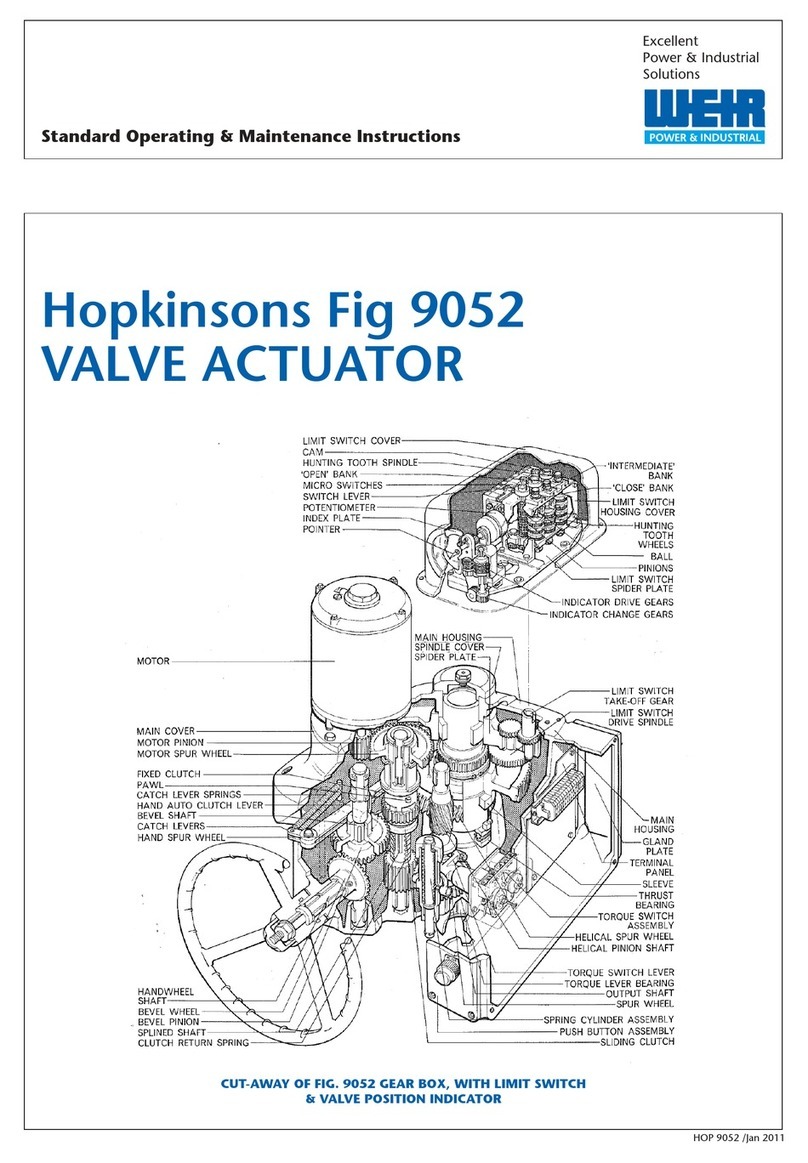
Weir
Weir Hopkinsons Fig 9052 Standard Operating & Maintenance Instructions
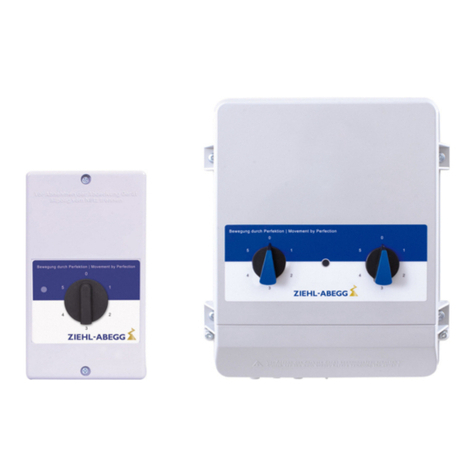
ZIEHL-ABEGG
ZIEHL-ABEGG R-E-1.5G operating instructions
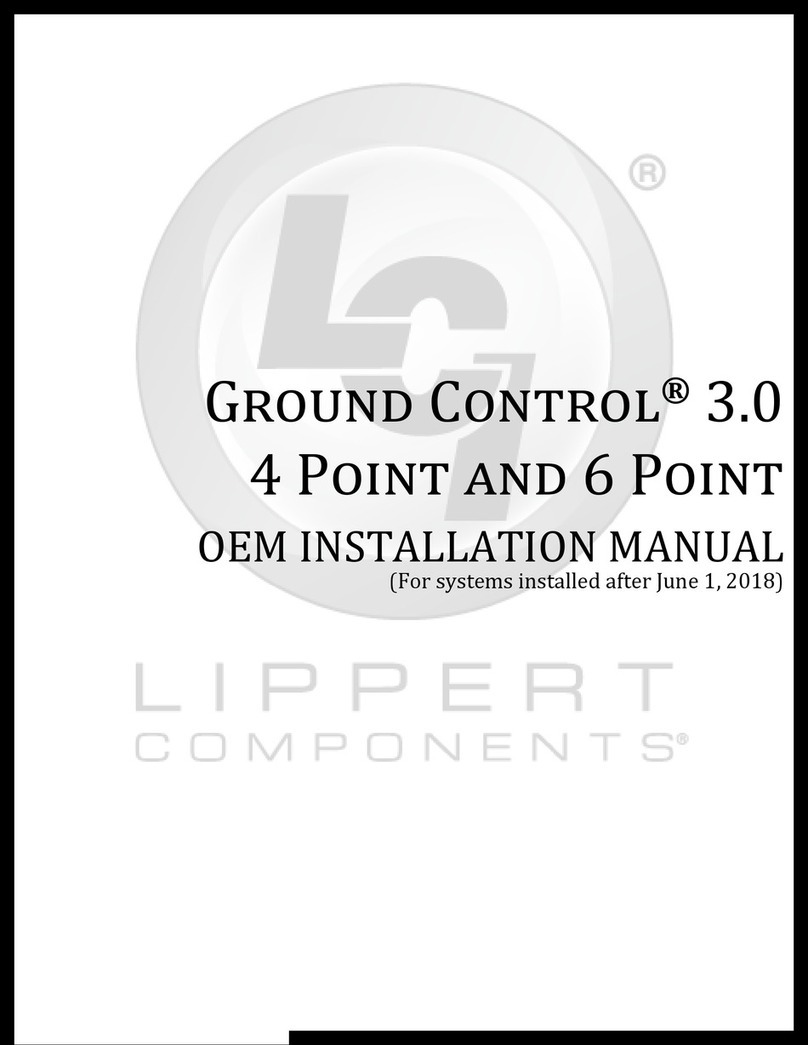
Lippert
Lippert Ground Control 3.0 installation manual
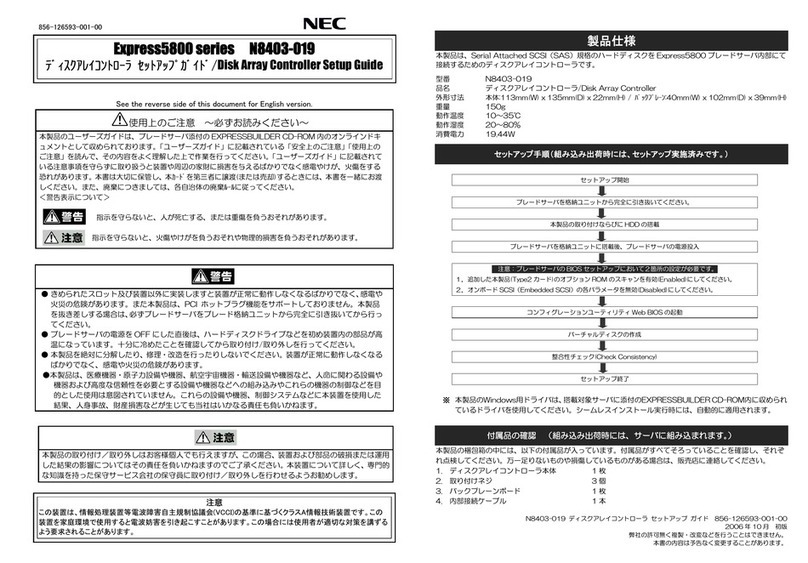
NEC
NEC NEC Express5800 Series user guide
